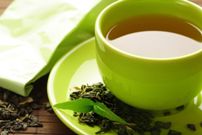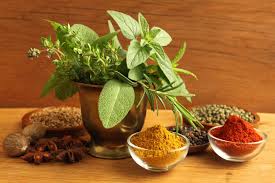Ayurvedic Guidelines to Transition to Spring
According to Ayurveda, spring is the king of seasons. A new beginning, a time for new start. After winter our bodies are prepared to lighten up, lose some weight and cleanse from accumulated imbalances.
As the natural world emerges from the cold and dry winter, spring is a time of warmth and moisture. This change in temperature and humidity affects the lungs and respiratory system often resulting in respiratory congestion, breathing difficulties and colds. If your sinuses were dry in the winter then your sinuses will form excess mucus in the spring to compensate, thus congestion. This respiratory and nasal congested in the spring can increase the risk for of infection and colds. It is this accumulated and stagnated [kapha dosha] mucus that liquefies and runs out of the body. The results is a runny noes, colds, allergies, hay fever, nasal congestion and even respiratory infections. So during the spring it is important to keep the immune system strong and reduce all forms of congestion especially respiratory.
From the Ayurvedic perspective, spring has the heavy and wet and even soft qualities of Kapha, thus, it is the kapha season and increases the kapha qualities in all doshas.
Dietary Guidelines according to Ayurveda
As spring approaches, it is advised to reduce heavy foods such as meats, potatoes, dairy and nuts. Limit foods with a predominant taste of sweet, sour or salty and favor foods with the tastes of bitter, pungent and astringent. Choose lighter proteins such as red lentils, split peas, garbanzo and pinto beans. Include cooked prunes, eat more figs, apples, pears, pineapple and papaya between meals. Have more cooked leafy greens, brussels sprouts and cabbage with every meal. Continue to use warming spices such as black pepper, cinnamon, ginger and cardamom in your cooking and teas to kindle the digestive fire and aid digestion.
Spring is considered a low grain season as most gains are traditionally not harvested until Fall, so reduce or avoid rice, grains, breads and pastas. There are dryer grains including [Organic] corn which is a dry grain suitable for a more wet Spring not a dry Fall. Spring is also a low dairy time of year since diary is one of the most congestive of foods.
Use small amount raw honey as a sweeten and fast for 1 day a week if you feel heavy.
Vata Pacifying Diet
In the spring, Vata is balanced by a diet of mostly cooked vegetables, lighter grains and legume dishes that are soft, rich in protein, with lots fat/oil, seasoned with warming spices, and served warm or hot.
Pitta Pacifying Diet
In the spring, Pitta is balanced by a diet of both cooked and raw vegetables with some hearty grains and lots of cooling fresh or dried fruit between meals.
Kapha Pacifying Diet
In the spring, Kapha is balanced by a diet of leafy green vegetables, dry fruit and dry and light grains with lots of warming and pungent spices served warm.
Spring Health Treatment
According to Ayurveda each individual needs a unique approach so choice the treatment that most fits your condition and constitution.
- Sip warm water with fresh lemon juice as a cleansing beverage throughout the day to help dissolve excess congestion in the gastrointestinal tract.

- Take raw honey between meals with turmeric, ginger powder and a little black pepper to further reduce congestion and support good digestion.
- Drink hot ginger and turmeric tea with honey between meals.
- Cleanse your colon [at night] using Triphala (an Ayurvedic formula) with some extra ginger and honey.
Details & benefits of a colon cleanse
Before summer arrives, you want to do a liver flush to remove any congestion in my gallbladder and liver.
Details & benefits of liver detoxification
If you are overweight you can do a liquid fast for a few days with diuretic teas and juices to cleanse the kidney/bladder pathway and stimulate fat metabolism.
Details & benefits of a kidney & bladder cleanse
Additional kapha balancing and detoxification efforts:
- Smoke an herbal mixture [dhumana] with herbs like chamomile, rose petals and cinnamon.
- Daily cleansing with the nasal passages with a concentrated salt water solution at room temperature (with a neti cup).

- Nasal administration of herbs (nasya) is the primary [panshakarma] treatment in Ayurveda to eliminate congestion (kapha) form the nose, sinuses and head area. Transitionally, sesame oil is uses with a small amount of vacha essential oil, but other essential oils can be uses such as eucalyptus, sage, camphor and allspice.
- Sleep with a humidifier with eucalyptus oil to help liquefy and move congestion from the respiratory system while sleeping. (This is especially helpful young children).
- Hot salt baths will help your body to further detoxify. ( Use 1/2 to 1 cup of sea salt not Epson salt.)
- Panchakarma (the Ayurvedic Detoxification process) is recommend in the spring.
Overall, Spring is a healthy season, except for the kapha [prakruti] individual (congested, heavy, oil and over weight) or people with kapha [vikruti] imbalances. Pitta dominant types will enjoy the first half of spring, although the second half could be too hot for them requiring them to start pacifying Pitta dosha in late spring. Vata dominant types will like the warms and more moist environment of spring unless toxic levels (ama) and congestion (kapha) are high. Vata, Pitta and Kapha types all benefit with some detoxification (shodhana) in the spring before the summer. After [pacifying the kapha dosha and] a spring cleanse most people lose some extra weight, eliminate any congestion and have more energy.







